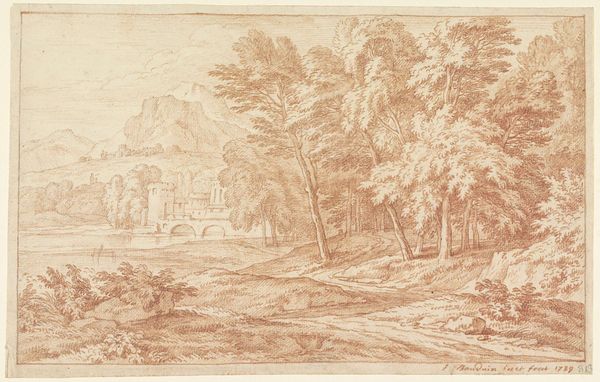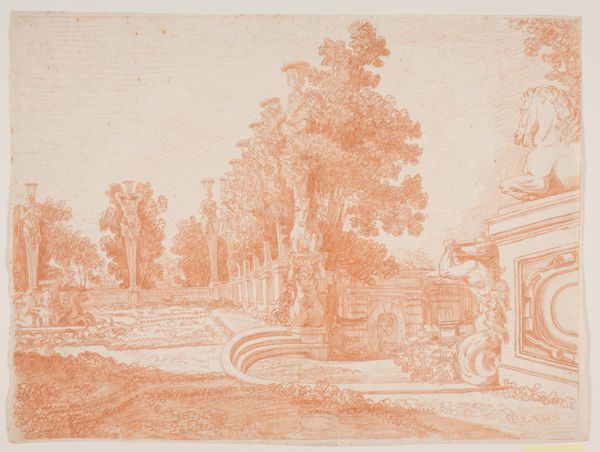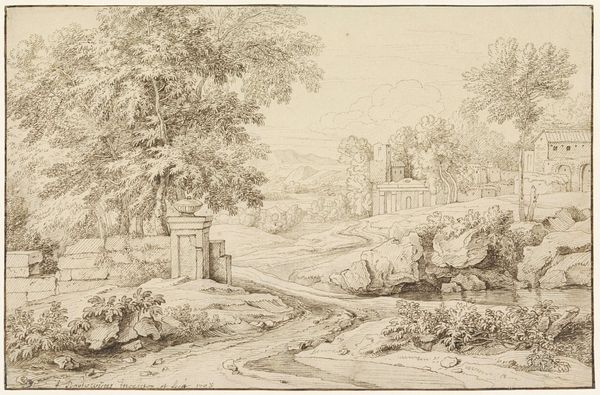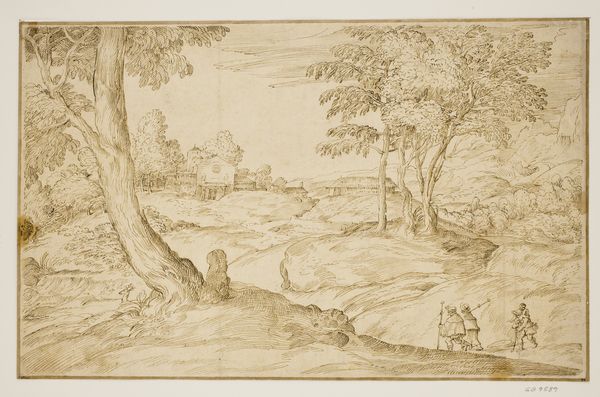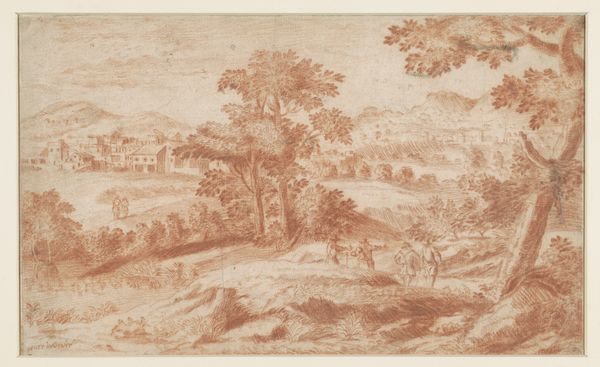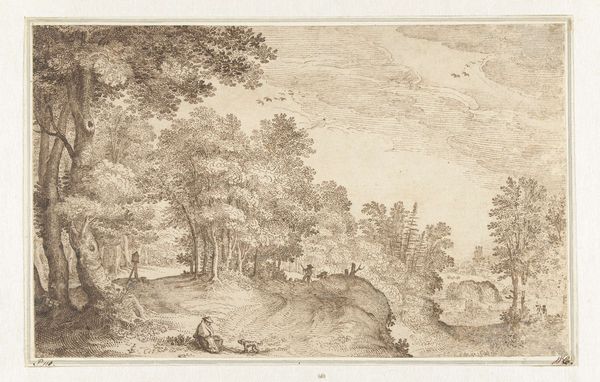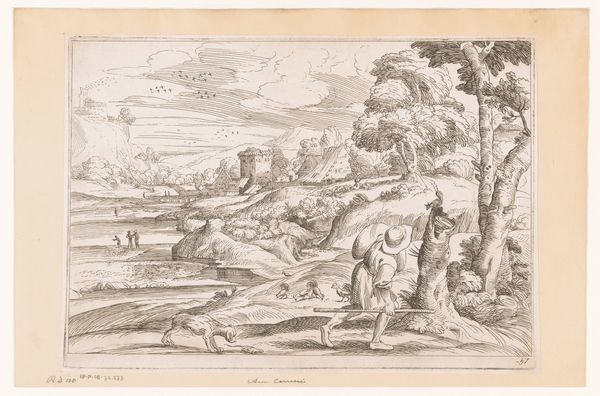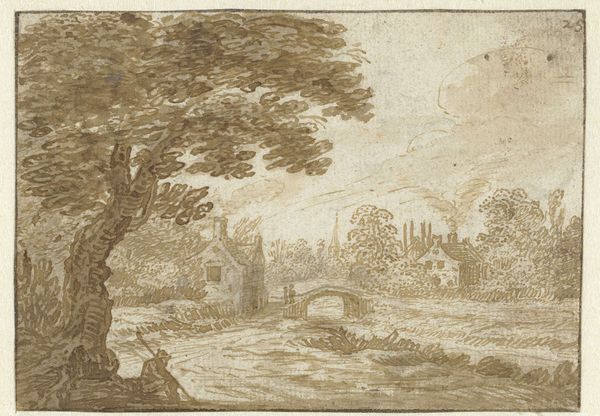
tempera, etching
#
baroque
#
tempera
#
etching
#
landscape
#
etching
Dimensions: height 196 mm, width 308 mm
Copyright: Rijks Museum: Open Domain
Curator: What a sepia dreamscape. It’s as if someone translated a half-remembered classical myth into the softest possible rendering. Editor: It's quite captivating, isn’t it? We’re looking at "Landscape with Monumental Vase and Several Buildings" by Frans Boudewijns, probably created sometime between 1700 and 1766. He worked with tempera and etching for this one. Curator: That etching technique! You can really feel the artisan’s touch. It’s so…direct. Was etching commonly taught back then or did it develop through a niche collective of printmakers and experimentation? Editor: Great question! Etching, by the 18th century, had become a widespread practice in printmaking, evolving significantly from its earlier applications. While it was integrated into formal artistic training, that's right—the guilds likely helped standardize materials to produce similar aesthetics, which explains how widespread the technique ended up being across Europe. Curator: The monument looms prominently here. What is the relationship between those aristocratic structures and their surroundings? They represent wealth and legacy, of course, but that monument looms far larger than it needs to be, suggesting hubris or excessive ambition. Editor: I agree it makes an imposing presence. Beyond symbolic ambition, there are socioeconomic dimensions to Boudewijns' construction. These constructed objects within nature mark sites of extraction and leisure for the wealthy. See how those structures reflect processes of both natural exploitation and constructed class boundaries in 18th-century European society. Curator: The whole image becomes imbued with this almost tragic understanding about this particular relationship. The overall tonal uniformity amplifies the impression that it is not a harmonious interplay but an aggressive assertion. Editor: I find I keep returning to those sepia tones—evocative, aren't they? Considering tempera's quick-drying and binding properties, and etching, Boudewijns utilized readily available resources. This is a moment of art as accessible material. Curator: Indeed. And from an art historical lens, its restrained palette makes the landscape speak, underscoring its symbolic tension between an untouchable, idealized past and a reality reshaped by the era. Editor: Boudewijns’ “Landscape” offers us a poignant snapshot of an era wrestling with its legacy and identity in reproducible form. Curator: Well put. It gives pause to how our landscapes are visual archives, storing not just geologic data but human ambition, success, and excess too.
Comments
No comments
Be the first to comment and join the conversation on the ultimate creative platform.
